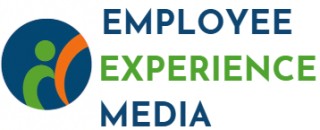Understanding the Importance of Development Goals
Recognizing the Significance of Development Goals in the Workplace
Understanding the importance of development goals is essential for both employees and employers. These goals are the roadmap to personal and professional growth, establishing a sense of direction and purpose in one’s career. Setting development goals not only fuels personal development but also boosts overall performance, morale, and employee retention in the long term. Development goals help employees focus on enhancing specific skills, such as technical skills, communication skills, and leadership capabilities. This personal growth contributes significantly to improved customer service and problem-solving abilities. When employees set clear, actionable goals, they are more likely to be motivated and improve their performance over time. An employer’s role in encouraging and facilitating development goals cannot be overlooked. By actively supporting employees in their career goals, employers cultivate a workforce that is adaptable, skilled, and prepared for new challenges. This ultimately leads to a more successful and cohesive team that aligns with organizational objectives. Furthermore, it’s crucial to differentiate between short term and long term goals. While short-term goals might focus on immediate tasks or skills, long-term goals should aim at comprehensive professional development. Aligning development goals with career aspirations ensures that employees are not only improving in their current roles but also preparing for future opportunities. To ensure the successful implementation of development goals, employers should be mindful of the challenges faced by employees and provide necessary guidance and resources. Programs such as mentorship can effectively bridge the gap between current skill levels and desired career outcomes, fostering an environment of continuous growth and learning.Personalized Development Goals for Employees
Tailoring Development to Individual Needs
Personalized development goals play a crucial role in enhancing the employee experience by aligning individual aspirations with organizational objectives. Employees are not one-size-fits-all; therefore, developing goals that cater to their unique strengths and areas for improvement can lead to significant professional growth.- Recognizing Individual Strengths: It's essential to identify what each employee excels at. This recognition not only boosts confidence but also helps in setting realistic and motivational goals.
- Connecting Goals with Career Aspirations: Employees are more engaged when they see a clear connection between their personal development goals and their long-term career aspirations. By understanding their career goals, you can craft development plans that are both inspiring and practical.
- Addressing Skill Gaps: Personalized goals should aim to bridge specific skill gaps. Whether it's enhancing communication skills or mastering project management, targeted goals ensure employees gain relevant competencies to improve performance.
- Balancing Short and Long-Term Objectives: Effective development strategies incorporate both immediate performance goals and long-term professional growth. This balanced approach keeps employees motivated while systematically working towards larger career milestones.
- Fostering Personal Growth: Focusing on personal development alongside professional goals encourages employees to explore new areas of interest, thereby promoting continuous learning and curiosity.
Skill-Based Development Goals
Building a Skill-Based Development Plan
Creating skill-based development goals plays a crucial role in enhancing the employee experience. Skill development is not only about addressing immediate work needs but also focuses on equipping employees with the tools they need for personal and professional growth over the long term. When employees have the opportunity to improve their skills, their performance improves, inspiring a greater sense of commitment and satisfaction. Employees can work with management to set personal development plans that include specific, measurable, achievable, relevant, and time-bound (SMART) goals. These might involve augmenting their technical skills, enhancing communication skills, or learning innovative approaches to problem solving. By clearly defining these goals, professionals can chart a path toward career advancement and enhanced job satisfaction. Some practical examples of skill-based goals include:- Technical Skills: Encouraging employees to undertake training in areas such as coding, data analysis, or other specific technical abilities tailored to their roles.
- Project Management: Supporting staff in earning certifications or developing competencies that promote effective project oversight and implementation.
- Communication Skills: Offering public speaking courses or workshops to help team members articulate ideas confidently and improve their interpersonal communication.
- Time Management: Providing resources that enable employees to prioritize tasks effectively, thereby improving personal productivity.
- Customer Service: Fostering an understanding of customer relations to enhance service excellence and customer satisfaction.
Leadership and Management Development Goals
Enhancing Leadership and Management Through Development Goals
Leadership and management skills are critical components for professional growth and play a significant role in enhancing the overall employee experience. By focusing on developing these capabilities, employees not only improve their own performance but also contribute to the team's success.- Setting Clear Objectives: Establishing specific, measurable goals is essential for employees looking to advance their leadership and management skills. These objectives can include improving decision-making processes, enhancing communication skills, or mastering project management techniques.
- Fostering Personal and Professional Growth: Encouraging employees to take ownership of their growth can significantly impact their engagement and satisfaction. Development goals focused on skills such as public speaking, customer service, and time management help employees set a foundation for personal growth and enable them to take on future leadership roles.
- Promoting Team Collaboration: Leadership and management competencies often go hand-in-hand with effective team collaboration. Setting development goals that emphasize teamwork and problem solving can enhance an employee's ability to manage diverse teams and projects successfully.
- Providing Opportunities for Training: Providing access to leadership training and mentorship programs can significantly aid in professional development. These initiatives should be aligned with the employee's career goals, ensuring a balance between short-term success and long-term growth.
Measuring the Success of Development Goals
Evaluating the Effectiveness of Employee Development Goals
To enhance employee experience and drive professional growth, it is essential to measure the effectiveness of the development goals set for employees. This process ensures that the goals are aligned with both personal and organizational objectives, fostering a productive work environment.- Regular Performance Reviews: Frequent evaluations allow employees to track their progress towards specific goals. Using these reviews, management can provide timely feedback, which aids in refining skills and improving performance.
- Feedback Mechanisms: Establishing diverse feedback channels, including peer reviews and customer feedback, can offer insights into areas such as communication skills and customer service. This helps in adapting development plans as needed to better support career goals.
- Quantitative and Qualitative Metrics: Utilizing both measurable outcomes, like achievement of short-term goals or improvement in project management, and qualitative aspects, such as enhanced problem solving or leadership qualities, provides a comprehensive assessment of goal success.
- Alignment with Organizational Objectives: Comparing individual development goals with long-term company objectives ensures that personal development is contributing towards the overall growth of the team and organization.
- Time-Bound Goals and Adjustments: Setting goals with clear timelines enables the identification of achievements and areas for improvement. This approach allows management to make necessary adjustments in real-time for maximizing potential outcomes.
Overcoming Challenges in Setting Development Goals
Addressing Common Obstacles in Development Planning
Setting development goals for employees is crucial for enhancing their professional growth and overall work experience. However, this process often encounters several challenges that can hinder its effectiveness. Here are some common obstacles and how to overcome them:
- Lack of Clarity: Employees and managers might struggle with defining clear, achievable goals. It's essential to ensure that goals are specific, measurable, and aligned with both personal and organizational objectives. Regular communication can help clarify expectations and align goals with career aspirations.
- Resource Constraints: Limited resources, such as time and budget, can impede the implementation of development plans. Prioritizing goals and leveraging available resources efficiently can mitigate these constraints. Consider using online courses or in-house training sessions to maximize learning opportunities.
- Resistance to Change: Employees might resist new development initiatives due to fear of change or lack of understanding. Engaging employees in the goal-setting process and providing support through mentorship or coaching can foster a more receptive attitude towards change.
- Inadequate Feedback: Without regular feedback, employees may not know if they are on track to achieve their goals. Implementing a structured feedback system can help monitor progress and make necessary adjustments to the development plan.
- Misalignment with Organizational Goals: Development goals should support the broader objectives of the organization. Ensuring alignment requires collaboration between employees and management to integrate personal development with organizational needs.
By addressing these challenges proactively, organizations can create a more supportive environment for employee growth, ultimately leading to improved performance and satisfaction.







